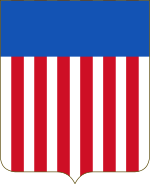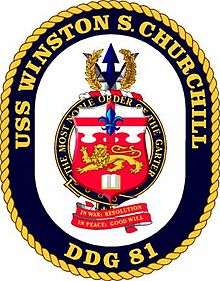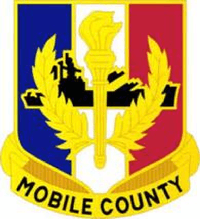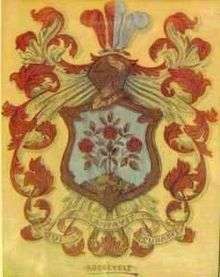United States heraldry


Heraldry in the United States of America was first established by European settlers who brought with them the heraldic customs of their respective countries of origin. As the use of coats of arms may be seen as a custom of royalty and nobility, it has been debated whether the use of arms is reconcilable with American republican traditions. However, George Washington had said that "heraldry is not incompatible with the purest ideals of republicanism". Several of the "founding fathers" also employed personal arms and a great number of Americans continue to do so.
Usage of arms
Most states do not employ coats of arms, but have chosen to use seals as their official emblems, but the United States has a coat of arms. The U.S. Constitution prohibits federal and state governments from conferring titles of nobility (see Title of Nobility Clause) and there are few noble coats of arms in the country. However private persons, including several past presidents, employ coats of arms either granted to them, or which they inherited. Since there is no official regulation on arms, except for the official seals, badges, insignia, decorations and medals of the country and the states, many private individuals have assumed arms, in addition to those who inherited them, or had them granted by or registered in another country. There is one anomalous exception to this lack of regulation: the coat of arms of the Swiss Confederation is specifically protected from unauthorized use within the U.S., under penalty of a fine and/or imprisonment for up to six months.[1]
U.S. Army Institute of Heraldry



Heraldic and other military symbols have been used by the military forces as well as other organizational elements of the government since the beginning of the Revolution. However, until 1919, there was no coordinated, overall military symbolism program. In that year, within the War Department General Staff, an office was delegated the responsibility for the coordination and approval of coats of arms and insignia of certain Army organizations. In 1924, formal staff responsibility for specific military designs was delegated to The Quartermaster General. As the needs for symbolism by the military services and the national government expanded, the scope of the services furnished by The Quartermaster General’s Office evolved into a sizable heraldic program. The acceleration of activities brought about by World War II, the expansion of the Army, and subsequent increase of interest in symbolism, contributed to the growth of the program. In 1949, the Munitions Board, acting for the Army, Navy and Air Force, directed the Army to provide heraldic services to all military departments. The program was expanded further as a result of the enactment of Public Law 85-263, approved September 1957, 71 Stat. 589, which delineates the authority of the Secretary of the Army to furnish heraldic services to the military departments and other branches of the federal government.
The Institute of Heraldry was established in 1960 at Cameron Station in Alexandria, Virginia. Within the Institute, functions formerly performed within the Office of The Quartermaster General and several field activities were consolidated. Upon reorganization of the Army in 1962, responsibility for the Heraldic Program was assigned to The Adjutant General’s Office. In 1987, with the realignment of certain Army Staff agency functions, the Institute was transferred to the United States Army Human Resources Command. In April 1994, The Institute of Heraldry was relocated from Cameron Station to Fort Belvoir, Virginia. As a result of a realignment in October 2004, responsibility for the Heraldic Program was assigned to The Administrative Assistant to the Secretary of the Army, Resources and Programs Agency.
The U.S. Army Institute of Heraldry consists of a staff of twenty civilians. The mission of the Institute is to furnish heraldic services to the Armed Forces and other United States government organizations, including the Executive Office of the President. The activities of the Institute encompass research, design, development, standardization, quality control, and other services relating to official symbolic items—seals, decorations, medals, insignia, badges, flags, and other items awarded to or authorized for official wear or display by government personnel and agencies. Limited research and information services concerning official symbolic items are also provided to the general public.[2]
State heraldry
Eighteen states have officially adopted a coat of arms. The former independent Republic of Texas and Kingdom of Hawaii each had a separate national coat of arms, which are no longer used.
Puerto Rico has a coat of arms as well, originally granted by the Spanish Crown in 1512, which also influenced the design of that territory's seal.
The flags of Maryland and Washington, D.C. are heraldic banners of the historical coats of arms of specific individuals.
Private heraldry
There are several private organizations working to advance heraldic traditions in the United States. These organizations keep registers of arms and give advice on designing coats of arms.
For a fee, the English College of Arms will devise arms for persons of English or Welsh descent, as the Scottish Court of the Lord Lyon will for persons of Scottish descent. The Chief Herald of Ireland has granted arms to Americans of Irish descent. The Spanish Cronista Rey de Armas (Chronicler King of Arms) grants arms to descendants of Spanish citizens, and to residents of territories formerly part of the Spanish empire, regardless of ancestry. Some American recipients of foreign orders of knighthood in which arms are expected to be borne have received arms from the relevant foreign authorities.
Timeline
16th century
- The English settlement of Ralegh, in Virginia, applies for a grant of civic arms from the College of Arms in 1586 - it's uncertain if the grant was made.[3]
17th century
- The Virginia Company of London was chartered and granted official arms in 1606 for the purpose of establishing the colony of Virginia at Jamestown - the company's arms became Virginia's government coat of arms for the duration of the colonial period
- The Dutch New Netherlands company establishes the New Netherlands (Nieuw Nederland) settlement in 1614 - it assumes official arms in 1630.
- Lord Baltimore assigns his personal arms to the Maryland colony in 1634 - they remain in use to this day.
- Harvard College in Massachusetts assumes arms in 1643.
- Rhode Island assumes official arms in 1661.
- New York (city) assumes civic arms in 1686.
- The first English grant of arms to an American colonist: Francis Nicholson, of Maryland, in 1694.[3]
- The College of William and Mary in Virginia obtains a grant of arms in 1694.[3]
18th century
- Queen Anne establishes a Carolina Herald, and a local aristocracy of landgraves and cassiques, for the Carolina colony in 1705 - Lawrence Crump (at the College of Arms) is Carolina Herald but doesn't appear to have granted any arms.[3]
- Connecticut assumes official arms in 1711.
- The first Scottish grant of arms: to Rhode Island governor Samuel Cranston, in 1724.
- Yale College in Connecticut assumes arms in 1736.
- Princeton University in New Jersey assumes arms in 1746.
- The thirteen British colonies declare independence, as the United States of America, in 1776 - at least 35 of the signatories of the Declaration of Independence, including John Hancock and Benjamin Franklin, are armigerous.[4]
- Five states assume official arms during or shortly after the War of Independence: New Jersey and Pennsylvania in 1776, Delaware and New York in 1777, and Massachusetts in 1780.
- The US Congress assumes official arms in 1782.[4]
- Congress president George Washington states in 1788 that heraldry is not "unfriendly to the purest spirit of republicanism".[4]
- The US Treasury assumes official arms c1789.[5]
- President Thomas Jefferson bears a coat of arms.[4]
19th century
- President John Adams bears a coat of arms.[4]
- Maine assumes state arms in 1820; Vermont does so in 1821; Missouri in 1822; and Michigan in 1836.
- The Mexican province of Texas, which has a large American settler population, becomes a republic 1836 - it later assumes official arms depicting a 'lone star'.
- Wisconsin assumes state arms c1848.
- Philadelphia assumes civic arms in 1874.
- Colorado assumes state arms in 1877.
- President James A. Garfield bears arms.[4]
- President Chester A. Arthur bears arms.[4]
- Publications include Edgar de V. Vermont's America Heraldica in 1886; and Eugene Zieber's Heraldry in America in 1895.
- Idaho assumes state arms in 1891.
- The U.S. annexes the Pacific island state of Hawaii in 1898 - it retains its existing official arms, dating from c1845.
- The U.S. takes over the former Spanish colony of Puerto Rico in 1898 - it already has official arms, dating from 1511.
- The Army assigns arms to the U.S. Military Academy at West Point in 1898.
20th century

- President Theodore Roosevelt bears ancestral Dutch arms - they are also borne by President Franklin Delano Roosevelt.[4]
- Publications include William A. Crozier's Crozier's General Armory in 1904 and John Matthews' A Complete American Armory in 1905.
- Los Angeles assumes civic arms in 1905.
- The US Army establishes a heraldry office and a system of unit coats of arms in 1919.
- An early example of an English honorary grant of arms to a US citizen descended from a pre-1783 colonist: Alain C. White, in 1920.[3]
- The 51st Artillery Regiment is the first army unit to adopt a coat of arms, in 1922.
- President Calvin Coolidge has a coat of arms.[4]
- Publications include Charles K. Bolton's Bolton's American Armory in 1927; the first volume of the New England Historic Genealogical Society's A Roll of Arms in 1928; and Eugene Spofford's Armorial Families of America in 1939.
- Rhode Island has civic arms devised for all its towns in the 1920s.[4]
- Alabama assumes state arms in 1939.
- The Federal Bureau of Investigation assumes arms in 1940.
- The US Army Air Force establishes a system of unit emblems and coats of arms in 1945 - when it becomes the US Air Force in 1947, President Truman assigns it official arms.
- President Truman assigns official arms to the Central Intelligence Agency in 1950.
- Film star Douglas Fairbanks Junior obtains an English grant of arms in 1951.
- President Dwight D. Eisenhower assumes arms in 1955.[4]
- North Dakota assumes state arms in 1957.
- The Army's heraldry section is reorganised as The Institute of Heraldry in 1960.
- The Irish government presents President John F. Kennedy with a coat of arms 1961.[4]
- A private American College of Heraldry & Arms is established in 1966 - it closes in 1970.
- The ACH&A devises arms for Presidents Lyndon B. Johnson in 1968, and Richard M. Nixon in 1970.[4]
- A new, private, American College of Heraldry is established in 1972.
- John Brooke-Little, Richmond Herald, presents a coat of arms to Hampden-Sydney College on October 19, 1976.[6]
- Virginia assumes state arms devised by the English College of Arms in 1976.
- President Ronald W. Reagan bears self-assumed arms, registered in Spain and Switzerland.[4]
- The College of Arms Foundation is established in 1984, to make donations to the College of Arms in England.
- The Mescalero Apache Tribe obtains a devisal of arms from the English College of Arms in 1986.[3]
- The Irish government presents President Bill Clinton with a coat of arms in 1995.[4]
21st century
- The Society of Scottish Armigers is founded in 2001 - it obtains a grant of arms from Lord Lyon in 2004.
- The American Heraldry Society is founded in 2003 - it launches a journal, The American Herald, in 2006.
See also
- Armorial of the Presidents of the United States
- Coats of arms of U.S. Armor and Cavalry Regiments
- Coats of arms of U.S. Armor Regiments
- Division insignia of the United States Army
- Brigade insignia of the United States Army
- Coats of arms of U.S. Cavalry Regiments
- Coats of arms of U.S. Army units
- Coats of arms of U.S. Artillery Regiments
- Coats of arms of U.S. Infantry Regiments
- Naval heraldry
References
- ↑ US Code Title 18, Part I, Chapter 33, § 708. Retrieved on May 24, 2010.
- ↑ The US Army Institute Of Heraldry Home Page Archived April 11, 2006, at the Wayback Machine.. Retrieved on November 2, 2006.
- 1 2 3 4 5 6 Woodcock, T. & Robinson, J.M. (1988). The Oxford Guide to Heraldry
- 1 2 3 4 5 6 7 8 9 10 11 12 13 14 15 American Heraldry Society
- ↑ heraldica.com
- ↑ http://www.hsc.edu/History-of-Hampden-Sydney/Coat-of-Arms.html
External links
- United States heraldry on Heraldica.org
- US Army Institute of Heraldry insignia list
- American Heraldry Society
- United States Heraldic Registry

.svg.png)